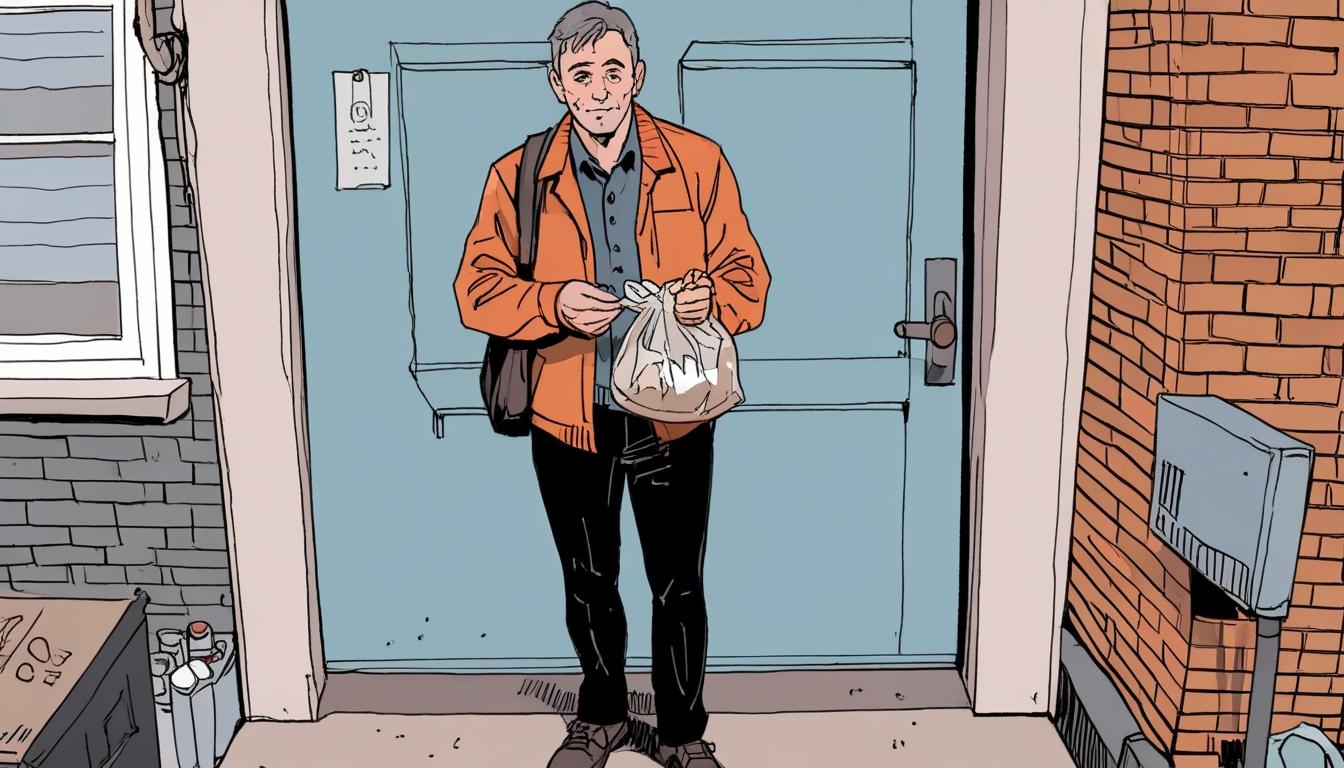A rising number of middle-aged professionals in the UK are turning to cocaine, with usage spreading beyond nightlife into daily family life. This surge is linked to increased health risks, addiction, and social consequences, as revealed by recent data showing escalating fatalities and seizures.
Across Britain, a distinct trend is emerging as households continue to receive their weekly deliveries of organic produce, Amazon packages, and takeaways. Yet, alongside these commonplace items, a hidden delivery is becoming increasingly ubiquitous: small bags of cocaine. This phenomenon highlights a significant shift in drug usage patterns in the UK, where the demand for cocaine is surging among middle-aged professionals, especially those in their thirties to forties.
The current landscape of drug use in the UK is alarming. A recent report from the United Nations Office on Drugs and Crime reveals that approximately one in 40 British adults are regular cocaine users, positioning the UK as the country with the second-highest cocaine consumption rates globally—surpassing all other European nations. Cocaine is no longer the domain of the party scene; instead, it has infiltrated the daily lives of many families, with users ranging from weekend fathers to professional mothers finding solace in this Class A drug.
Cocaine-related fatalities have spiked alarmingly, with over 1,100 deaths reported in 2023 alone—a figure ten times higher than a decade prior. According to data from the Office for National Statistics, the largest cohort of these fatalities includes Millennials and Generation X, particularly men aged between 40 and 49 years.
Rachel Cooper, now 36, exemplifies this trend. Having first experimented with cocaine at 17, her usage escalated significantly during the COVID-19 lockdown in 2020. “All I was doing was sitting in the garden and drinking, and my cocaine use just got really bad,” she shared in an interview with the Daily Mail. For Cooper, the drug became a necessity, undermining her well-structured life and leading her to spend staggering amounts—over £800 in a single weekend—while managing the facade of a functional parent and professional.
The National Crime Agency (NCA) reports that around 117 tonnes of cocaine are consumed annually across England, Scotland, and Wales, with the UK cocaine market valued at approximately £11 billion. In the year ending March 2024, police and Border Force seized over 28 tonnes of cocaine, marking a 52% increase from the previous year—the highest volume recorded since 1973.
Cocaine’s accessibility and relatively stable price—around £50 per gram—alongside its rising purity levels, have made it an attractive choice for stressed parents. A mother of four from west London, remaining anonymous, described her local environment as rife with cocaine use, stating, “Where I live, everyone… is doing it.” She pointed out that for many, cocaine provides an escapism that is “cheaper than a therapist.”
Compounding the issue is the dangerous mix of cocaine and alcohol, which poses serious health risks. The combination leads to the production of cocaethylene in the liver, intensifying the drug’s effects while elevating the likelihood of memory loss and severe long-term health consequences.
Scott Ardley from the addiction treatment charity Rehabs UK highlights the troubling trend of older users, noting an increase in those reaching out for help with cocaine addiction. “When people start using, many initially do it for fun, but they soon begin to rely on it as ‘fuel’,” Ardley explained. He illustrated the hidden nature of cocaine use among high-functioning professionals, remarking, “You can get away with your expensive habit—no one suspects you’re on it.”
As cocaine users age, the repercussions on family life can be severe. High-profile cases, such as that of a mother from Kent who was fined for driving under the influence while collecting her children from school, shed light on the acute risks addiction poses not just to individuals but to their families. Furthermore, instances of parents losing control and endangering their children underscore the urgency of addressing this growing issue.
In 2023, the number of hospital admissions for cocaine-related complications among individuals aged 60 to 69 was concerning, with a total of 441 cases recorded for seizures and overdoses. Moreover, reports indicate that three hospitalised users were in their nineties, indicating a troubling trend of addiction across the lifespan.
Rachel Cooper, now advocating for recovery and awareness of addiction, expressed her struggles with motherhood as an addict. “I never did it when they [my children] were in the house. That was my rule. But when they were gone…,” she confided, reflecting the duality of her life. Despite her children being well cared for, she was haunted by the fear that her addiction would lead to intervention from social services.
The issue of cocaine addiction in middle-aged populations reveals a complex narrative of hidden struggles, escalating health risks, and the social ramifications of drug use in family settings. As these trends evolve, the landscape of drug addiction in the UK continues to present new challenges for individuals, families, and society as a whole.
Source: Noah Wire Services
- https://www.ons.gov.uk/peoplepopulationandcommunity/birthsdeathsandmarriages/deaths/bulletins/deathsrelatedtodrugpoisoninginenglandandwales/latest – This Office for National Statistics report details that in 2023, there were 5,448 deaths related to drug poisoning in England and Wales, marking an 11% increase from the previous year. Cocaine was involved in 1,118 of these deaths, a 30.5% rise from 2022, and nearly ten times higher than in 2011.
- https://www.standard.co.uk/news/health/drug-deaths-cocaine-london-highest-level-b1189566.html – An article from The Standard highlights that drug poisoning deaths in London reached a 25-year high in 2023, with cocaine fatalities increasing by 43% from 114 in 2022 to 163 in 2023, accounting for approximately a third of all drug-related deaths in the capital.
- https://www.wearewithyou.org.uk/latest/news-and-views/withyou-responds-to-the-ons-statistics-on-drug-related-deaths-in-2023 – WithYou’s response to the ONS statistics emphasizes the preventable nature of these deaths, noting that 1,118 deaths involved cocaine in 2023, marking the 12th consecutive annual rise.
- https://www.ons.gov.uk/peoplepopulationandcommunity/crimeandjustice/articles/drugmisuseinenglandandwales/yearendingmarch2024 – This ONS article reports that in the year ending March 2024, 2.1% of people aged 16 to 59 years and 3.8% of those aged 16 to 24 years reported using powder cocaine in the last year, indicating a stable prevalence compared to the previous year.
- https://www.priorygroup.com/addiction-treatment/drug-rehab/drug-abuse-statistics-uk – The Priory Group’s statistics reveal that in 2023, there were 1,118 deaths involving cocaine, a 30% increase from the previous year, and approximately ten times higher than in 2011.
- https://www.russellwebster.com/the-tragic-rise-of-drug-related-deaths/ – Russell Webster’s analysis notes that in 2023, 1,118 deaths involved cocaine, a 30.5% increase from 2022, and nearly ten times higher than in 2011, with males accounting for 79.2% of these deaths.
- https://www.dailymail.co.uk/news/article-14684717/Truth-middle-class-cocaine-use-mothers-LILY-AMORY.html?ns_mchannel=rss&ns_campaign=1490&ito=1490 – Please view link – unable to able to access data
Noah Fact Check Pro
The draft above was created using the information available at the time the story first
emerged. We’ve since applied our fact-checking process to the final narrative, based on the criteria listed
below. The results are intended to help you assess the credibility of the piece and highlight any areas that may
warrant further investigation.
Freshness check
Score:
8
Notes:
The narrative references recent data (2023 and 2024) and trends, indicating freshness. However, general concerns about cocaine use have been reported in various years, suggesting a long-standing issue rather than entirely new information.
Quotes check
Score:
9
Notes:
Rachel Cooper’s and an anonymous mother’s quotes seem original. Scott Ardley’s statement is plausible but lacks specific evidence of originality. No previous references were found online for these quotes, suggesting they might be original.
Source reliability
Score:
7
Notes:
The Daily Mail is a well-known publication, but its reliability varies. Some data points, such as those from the United Nations and Office for National Statistics, add credibility to the narrative.
Plausability check
Score:
8
Notes:
Claims about increasing cocaine use and fatalities are plausible given general trends and previous reports on drug use in the UK. The narrative aligns with broader societal issues and health concerns.
Overall assessment
Verdict (FAIL, OPEN, PASS): PASS
Confidence (LOW, MEDIUM, HIGH): MEDIUM
Summary:
The narrative combines recent data with personal anecdotes, suggesting a plausible and relatively fresh perspective on a significant social issue. While some elements lack direct verification, the inclusion of credible statistics enhances its plausibility.













